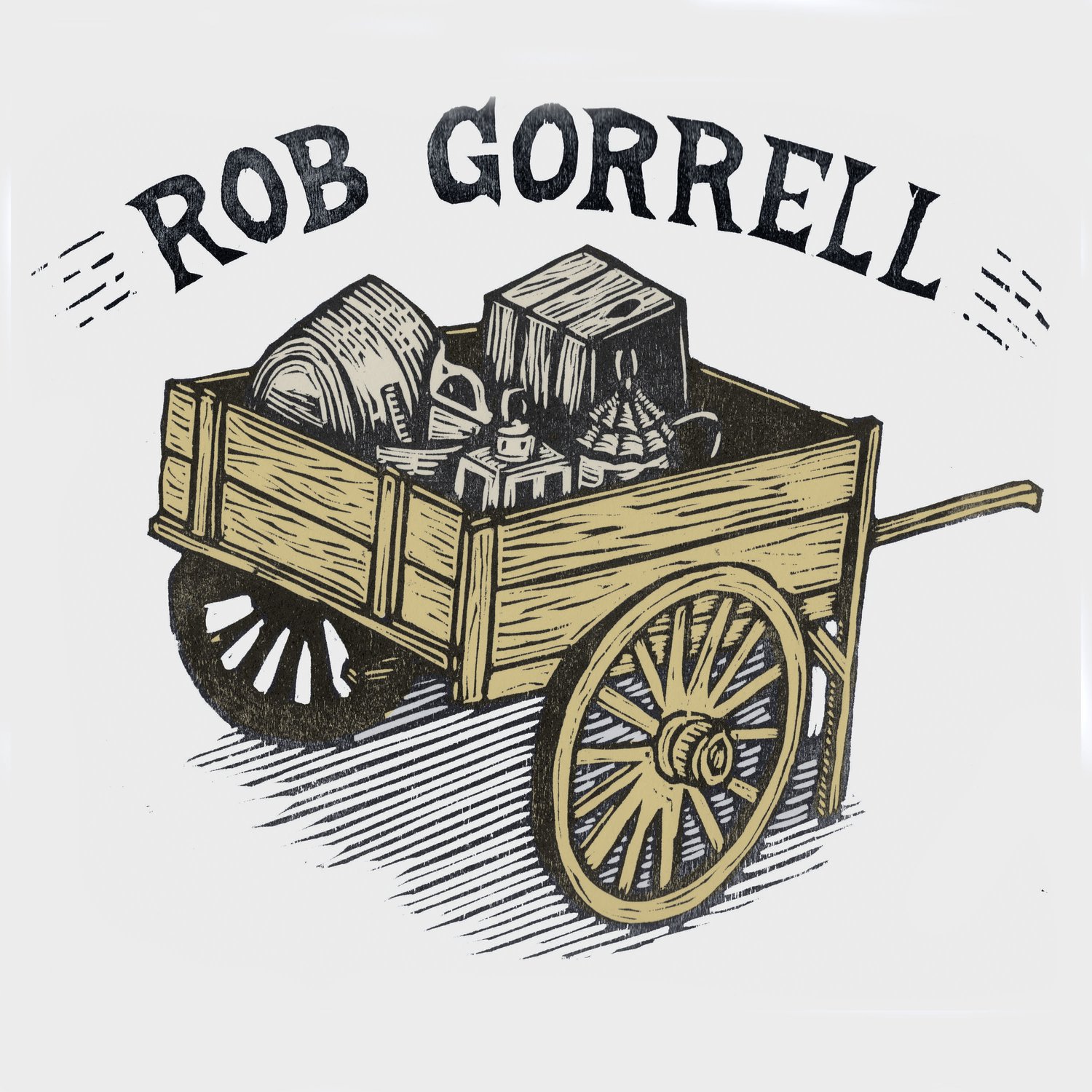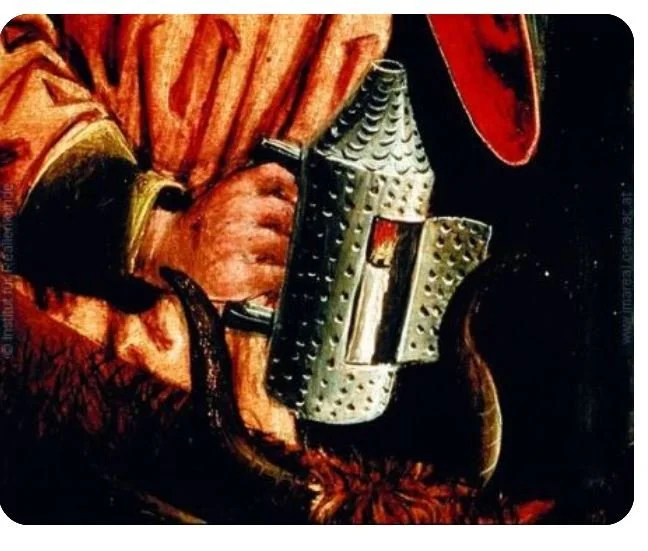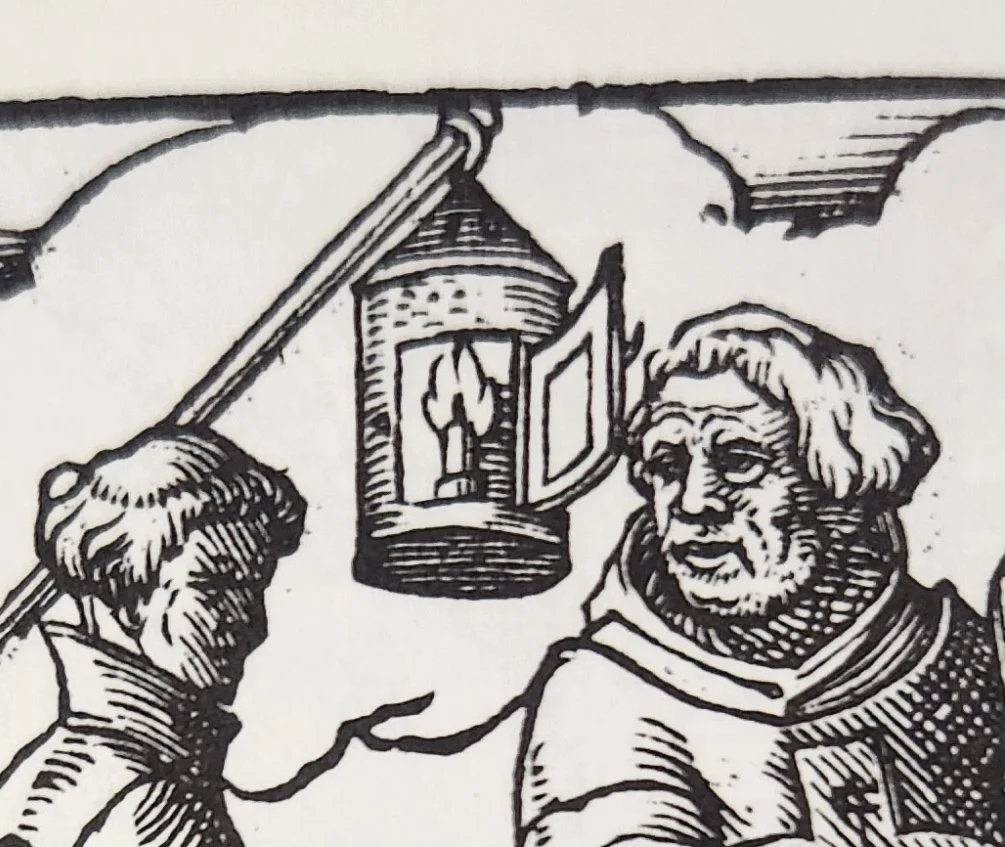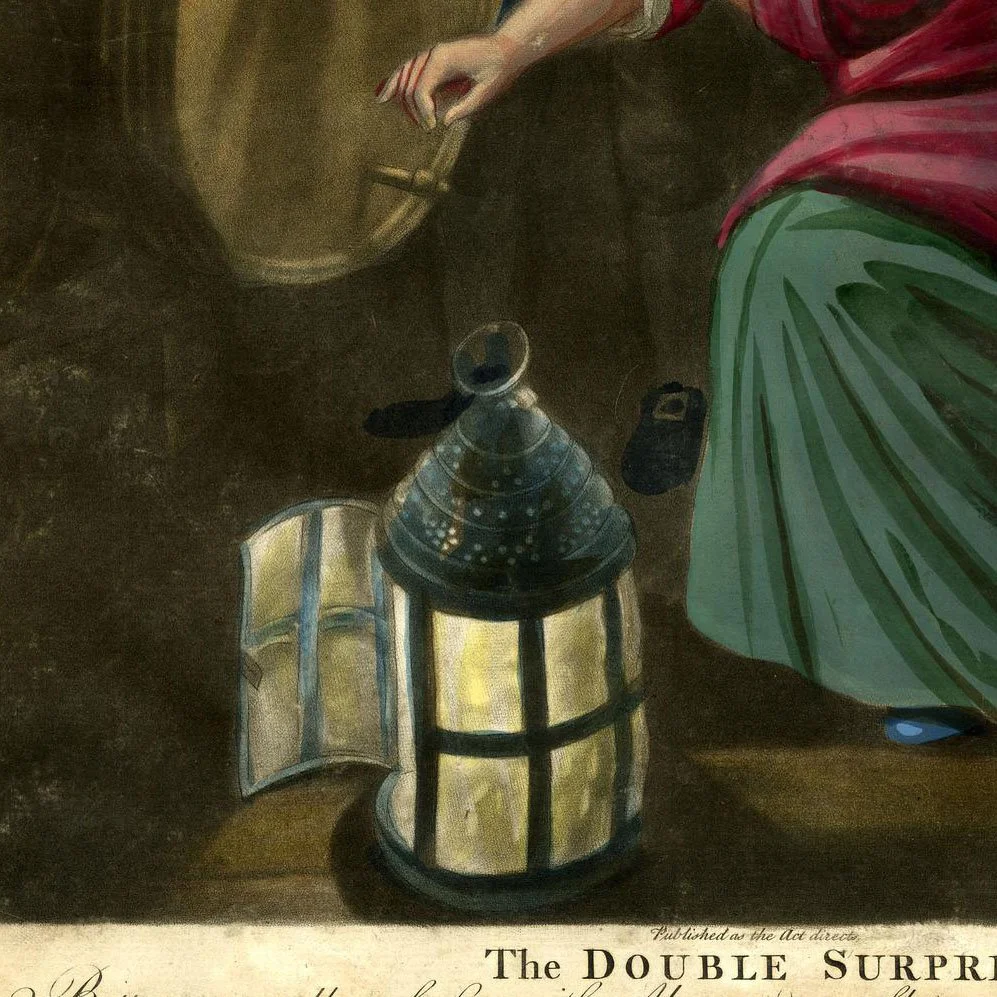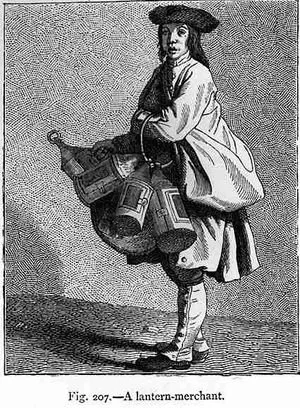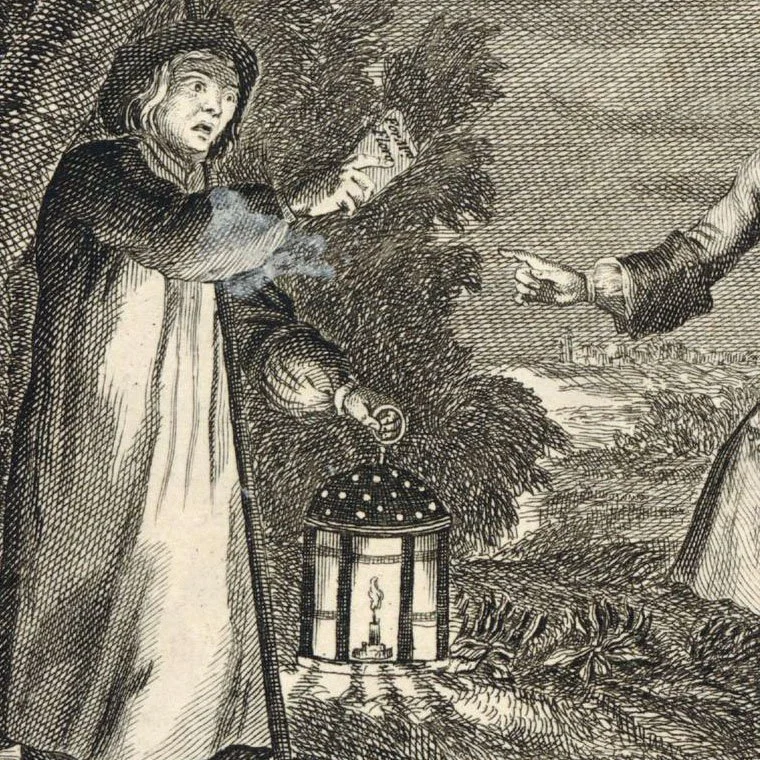The Round Hanging Lantern.
Round, Round, Round. If I say one useful thing in these posts on lanterns is, round lanterns are most likely the way to go in your living history impression. Square was around, but round ruled.
In this post I am going to look at the development of the round tin candle lantern. In a general sense, hanging sheet-iron or tin lanterns did not change much from the end of the sixteenth to the beginning of the 19th century (Caspall, 233). I am referencing the book Making Fire & Light in the Home, Pre-1820, by John Caspall often in this post as it is the best source I have at this point that tries to define lantern styles and construction techniques chronologically.
17th Century Lanterns
In the 17th century brass was considered too costly for making common lanterns (especially in Britain). Sheet iron was inexpensive and more durable than brass in harsh conditions. Horn panes were also safer in that they do not leave sharp edges when broken which could harm livestock (Caspall, 233). According to Caspall, some of the characteristics of 17th century lanterns included the following:
Sheet iron with horn panes
Sharply conical roof vented by four large diameter holes spaced around the top, sometimes with smaller holes spaced around the larger one.
Trefoil shaped holes were fashionable on English lanterns from the 14th to 16th centuries.
Dormers that covered vent holes did not appear until the 18th century.
No chimney or fluted cover over the hole at the top of the cone.
An iron rod carrying ring was held in place by an eye kept in place by a horizontal wire through the eye and body of the cone.
No reinforcing ridges on the body or roof in the early 17th century and seams were riveted or brazed.
Early century lanterns were of a heavier gauge iron than later rolled lanterns.
Here is the 1578 image of a hanging lantern for The Book of Trades. It appears to be a simple lantern, not much adornment and with a horn-paned door. It may be punched tin, or it could have horn panes on the unseen side.
Early to mid 18th Century Lanterns.
Caspall states that beginning in the mid-eighteenth century, the conical top became less steep and made with thinner iron than earlier styles. Characteristics of lanterns during this period are:
The conical tops are less steep.
Usually four vent holes.
Rolled reinforcement rings halfway up the cones.
Lanterns made with soft sold and solid, flush rivets.
Suspension ring switched from wire ring to rolled flat strips with folded edges.
Detail from “The Double Surprise”, a satirical print from about 1770. Original is from the collections of the British Museum. Museum number 1935,0522.1.116. It was published in England by Carington Bowles and is after Gerard Dou.
All three of these images are from mid eighteenth century artworks. You can see a variety of details such as beading on the cones and bodies, round tops, horn panes and piercings. These patterns can be carried for impressions portraying anything from the late seventeenth through the early nineteenth century.
Late 18th Century Lanterns
By the late eighteenth century hollow rivets appeared, along with rolled edges ( I am assuming this is machined formed or wired edges). Horn panes were still being used. Lanterns are being made with less rivets and more soldered joints. Some lanterns are being made with a secondary candle holder on the outside of the lantern (Caspall, 234).
During this period tinplate and tools for tin working became more available in the U.S. colonies. I will write more about this in later posts. For example, in the 1790s there were fourteen tinsmiths advertised in Philadelphia alone (Kauffman, 69).
This is just a quick sampling of the many examples of round lantern styles that have been depicted in period art. Later on I will start posting many more images and their sources for your use. You can see all of my interpretations of traditionally made tin lanterns in my store by clicking here. I am also on FaceBook and Instagram. I would be happy to hear any of your comments and ideas.
Caspall, John, Making Fire & Light in the Home, Pre-1820. Antique Collectors Club, Woodbridge England, 1987.
Kauffman, Henry J, Early American Copper, Tin, and Brass, McBride, NY 1950.
Sachs, Hans, Jost Amman, and Benjamin A. Rifkin. 1578. The Book of Trades.
